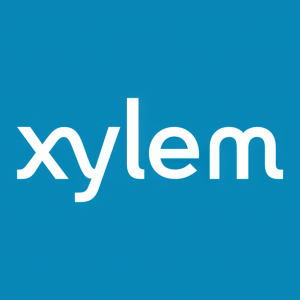Sense and Xylem's Sensus Team to Drive a New Standard for High-Resolution Data with Next-Generation 1MHz Meter
Rhea-AI Summary
Sense and Xylem's Sensus team announced a groundbreaking collaboration to develop the first electric meter in North America capable of capturing and processing 1 MHz data. The high-resolution data will improve grid edge intelligence, helping utilities detect anomalies and enhance grid reliability amidst increasing risks like extreme weather and the rapid integration of renewable energy sources. By embedding Sense's real-time edge intelligence software in Sensus meters, utilities will gain dynamic operational capabilities and more innovative rate creation, aiding regulatory compliance and cost management for customers. This collaboration aims to revolutionize the integration of distributed energy resources and adapt to evolving smart device ecosystems without the need for hardware replacements.
Positive
- Collaboration to develop the first 1MHz electric meter in North America.
- Improved grid edge intelligence to detect and locate anomalies.
- Enhances grid reliability against extreme weather and renewable integration.
- Enables dynamic grid operations and innovative rate creation.
- Supports regulatory compliance and cost management for customers.
- Adapts to evolving smart devices without hardware replacements.
Negative
- Potential technical challenges in embedding real-time edge intelligence software.
- Possible high initial implementation costs for utilities.
News Market Reaction 1 Alert
On the day this news was published, XYL declined 0.35%, reflecting a mild negative market reaction.
Data tracked by StockTitan Argus on the day of publication.
Collaboration will advance grid edge intelligence
The combined capabilities of Sense and Xylem's Sensus solution will help utilities address today's most pressing challenges. These include grid reliability amidst increasing risk of extreme weather events, rapid electrification, more intermittent renewables and integration of distributed energy resources. It also enables utilities to meet regulatory imperatives to maximize grid-enhancing technology investments.
"Our collaboration is a winning combination for electric utilities and their customers," said Derl Rhoades, Director of Electric Metrology for Xylem's Sensus team. "The 1MHz samples will aid utilities in dynamic grid operations and innovative rate creation, all while providing their customers with the ability to manage their home energy costs."
The partnership is anticipated to raise the bar on what can be accomplished through intelligence embedded at the grid edge. To unlock 1MHz sampling, Sense's real-time edge intelligence software will be embedded in the Sensus electric meter.
"The lesson we keep learning is that with more data we enable new generations of capabilities. By sampling at 1 MHz and using edge computing, we are able to process almost one billion times the amount of data currently available in the 15-minute interval data from first generation smart meters," said Mike Phillips, CEO of Sense. "Just as advancements in AI are being driven by large language models, such as GPT-4, made possible by a significant increase in data, Sense's technology and grid-edge processing will enable the next level of real-time intelligence needed to manage an increasingly complex grid."
Utilities are also increasingly looking for software that can solve problems more cost-effectively than traditional hardware approaches and help position them to address future unknowns in the energy transition. By embedding intelligence as updatable software, the core components of energy infrastructure can adapt over time and connect to the evolving set of smart devices that consumers are adopting, all without replacing hardware. This approach allows systems to address increasing amounts of electrification in the home while increasing the reliability of the grid.
About Sense
Sense is making the energy transition accessible to everyone. Sense's embedded intelligence redefines how utilities and consumers interact with homes and the grid. By partnering with meter manufacturers, Sense delivers software driven by high-resolution data that's vital for utilities to better engage with customers, detect devices, balance load, forecast demand and identify anomalies. Our consumer-facing app makes homes smarter, empowering home dwellers to make better use of their energy, lower electricity bills, and reduce their carbon footprint. Learn more at https://sense.com.
![]() View original content to download multimedia:https://www.prnewswire.com/news-releases/sense-and-xylems-sensus-team-to-drive-a-new-standard-for-high-resolution-data-with-next-generation-1mhz-meter-302191201.html
View original content to download multimedia:https://www.prnewswire.com/news-releases/sense-and-xylems-sensus-team-to-drive-a-new-standard-for-high-resolution-data-with-next-generation-1mhz-meter-302191201.html
SOURCE Sense







